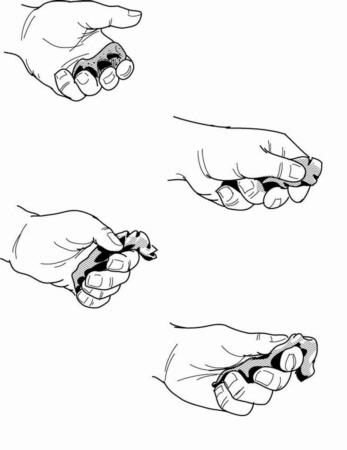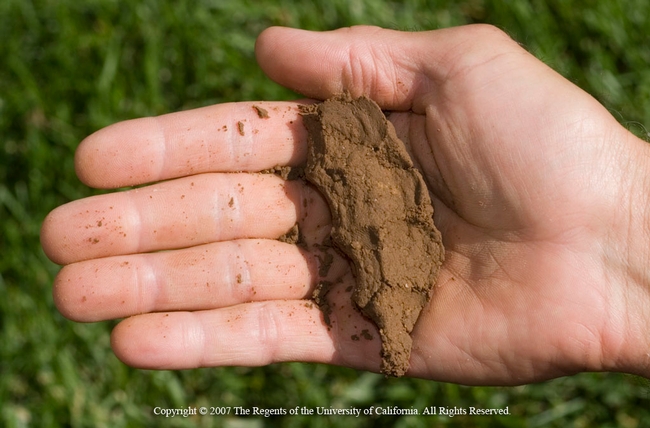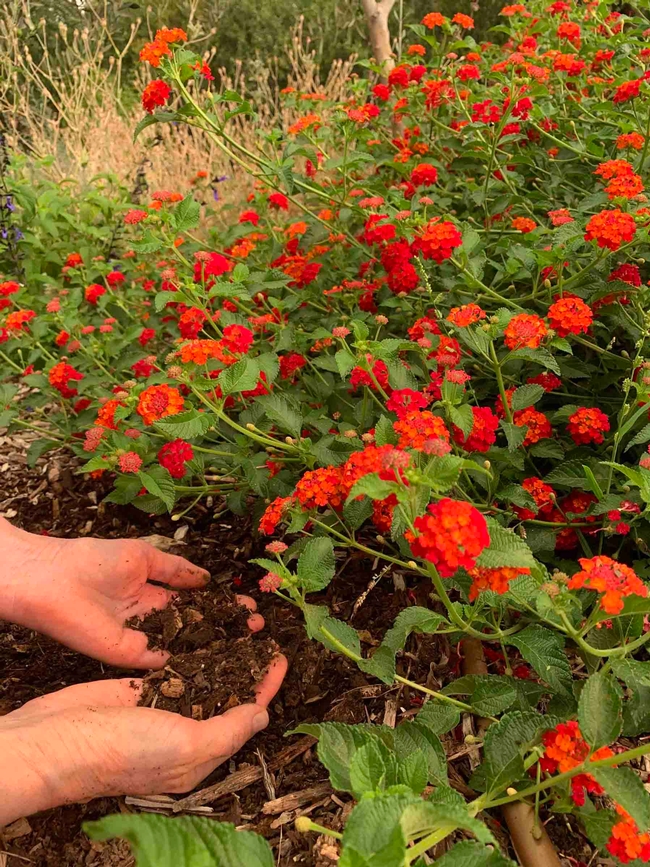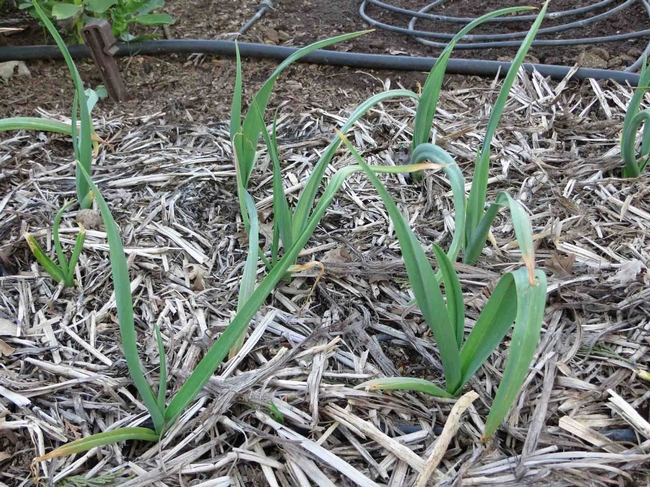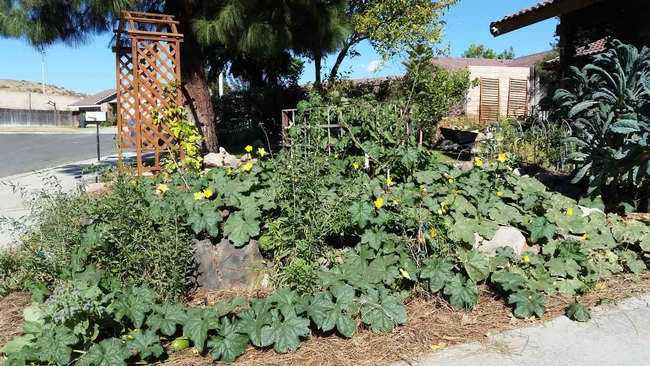Does growing a vegetable garden sound like something you'd like to do, but you don't feel equipped? So, here's the deal. Find some dirt, and then plant. It's that simple. If you want to grow food, the first step is to find some dirt. Consider the usable ground you have. Take a look around. Maybe it's that patch of front lawn that you're tired of mowing, or haven't mowed at all. Could it be the bare spot in the back where the dog likes to poop? Step One is to find some dirt, and don't be judgy about the dirt you have. Your dirt is full of potential.
Determining soil texture by feeling, Dennis R. Pittenger, UC ANR
Medium-textured soil is the ideal, Jack Kelly Clark, UC ANR
Hands in the soil, John Ober
Your objective is to give your dirt some tender loving care, and your soil will return the favor by giving you healthier plants and better produce. Your soil's mineral composition is what it is, but one element we can be altered is organic material. No matter what kind of dirt you have, adding organic matter will make it better. Organic materials include grass clippings, fallen leaves, straw, wood chips and bark, hulls, plant clippings (chopped small) and everyone's favorite...manure. Now, here's an important point: it takes time for the organic materials to break down and start to enrich the soil, to become usable to plants. So, what's the best and quickest way to get those things into your soil? Compost. Compost is already mostly decomposed organic matter, so it mixes into the soil and continues to decompose slowly, releasing nutrients to plants and improving soil texture. Compost costs money, but you can also make your own in as little as 2 to 3 weeks at little or no cost. This article has a complete description of DIY compost: Compost in a Hurry (UC ANR Publication 8037).
Growing garlic with mulch, Jeanette Alosi
Think of mulching as another method of composting that involves placing a thick layer of organic matter on top of the soil and letting it decompose very slowly. It's even better to put a layer of newspaper or cardboard on the ground first, wet it, and then spread out the organic material on top, about 4 inches thick. The organic matter and the paper or cardboard underneath will break down over the next 6 to 10 months. To add plants, push aside the mulch, expose the paper or cardboard, and cut an "X" large enough to accommodate your plant. Fold back the flaps, dig a hole, and add your plant. When done, lay the flaps back in place and re-cover with mulch. Remember that front lawn that you're thinking could be a vegetable garden? This method of sheet mulching is one way you get rid of the grass! Cover it, mulch it, forget about it. If you want to learn more about lawn removal, here's an article containing complete instructions: Lawn Removal: Do It Right.
California Friendly Gardening, sheet composted vegetable garden, Christine Lampe, UC ANR
UC Master Gardeners of Butte County are part of the University of California Cooperative Extension (UCCE) system. To learn more about us and our upcoming events, and for help with gardening in our area, visit our website. If you have a gardening question or problem, email the Hotline at mgbutte@ucanr.edu or leave a phone message on our Hotline at (530) 538-7201. To speak to a Master Gardener about a gardening issue, or to drop by the MG office during Hotline hours, see the most current information on our Ask Us Hotline webpage.
